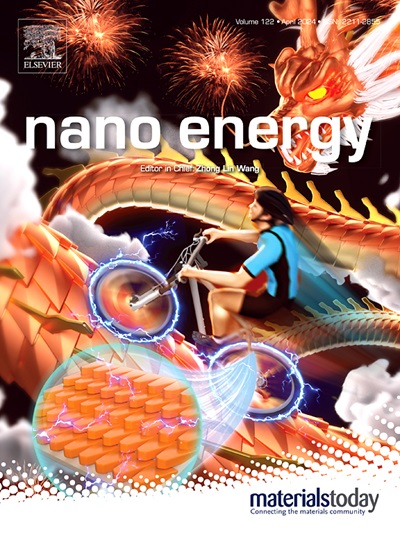Engineering durable nitrate-enriched solvation sheaths in carbonate electrolytes through functional separator design for high-voltage lithium metal batteries
IF 16.8
1区 材料科学
Q1 CHEMISTRY, PHYSICAL
引用次数: 0
Abstract
Dendrite growth and high-voltage capacity fade conundrums persist as key barriers in lithium-metal batteries (LMBs). Although LiNO3 effectively optimizes interfacial chemistry as an electrolyte additive, its application remains hampered by limited carbonate-electrolyte solubility and self-depleting behavior during extended cycling. This study presents an innovative interfacial engineering strategy through the strategic incorporation of LiNO3-impregnated hollow mesoporous silica composites (HMS@LiNO3) onto separator surfaces to achieve dual-interface modulation. Capitalizing on the strong adsorption capability of HMS within the high-dielectric ethylene carbonate, a nitrate-rich solvation structure is lastingly established at the anode interface. The configuration facilitates the formation of a Li3N-enriched solid electrolyte interphase with superior ionic conductivity, effectively enhancing lithium deposition kinetics while inhibiting dendritic growth. Concurrently, the cathode interface benefits from a controlled nitrate-lean solvation sheath that preferentially undergoes oxidative decomposition, generating a robust protective layer to mitigate electrolyte decomposition under 4.5 V operation. As a result, the lifetime in Li plating/stripping exceeds 1800 h and the average Coulombic efficiency is as high as 98.25 % over 350 cycles. The matched NCM811//Li full cell exhibits a high-capacity retention rate of 80.38 % after 500 cycles at a cut-off voltage of 4.5 V, providing valuable guidance into the development of long-life high-voltage LMBs.

通过高压锂金属电池功能分离器设计碳酸盐电解质中持久的硝酸盐富集溶剂化护套
枝晶生长和高压容量衰减难题一直是锂金属电池(lmb)的主要障碍。虽然LiNO3作为电解质添加剂有效地优化了界面化学,但其应用仍然受到碳酸盐-电解质溶解度有限和长时间循环过程中自耗尽行为的限制。本研究提出了一种创新的界面工程策略,通过将lino3浸渍的中空介孔二氧化硅复合材料(HMS@LiNO3)战略性地结合到分离器表面来实现双界面调制。利用HMS在高介电性碳酸乙烯中的强吸附能力,在阳极界面上持久地建立了富硝酸盐的溶剂化结构。该结构有利于形成具有优异离子电导率的富li3n固体电解质界面,有效增强锂沉积动力学,同时抑制枝晶生长。同时,阴极界面受益于受控的硝酸盐-稀薄溶剂化护套,该护套优先进行氧化分解,产生坚固的保护层,以减轻4.5 V操作下的电解质分解。结果表明,在350次循环中,镀/剥离锂的寿命超过1800小时,平均库仑效率高达98.25%。匹配的NCM811//Li全电池在4.5 V的截止电压下,经过500次循环后的高容量保持率达到80.38%,为长寿命高压lmb的开发提供了有价值的指导。
本文章由计算机程序翻译,如有差异,请以英文原文为准。
求助全文
约1分钟内获得全文
求助全文
来源期刊

Nano Energy
CHEMISTRY, PHYSICAL-NANOSCIENCE & NANOTECHNOLOGY
CiteScore
30.30
自引率
7.40%
发文量
1207
审稿时长
23 days
期刊介绍:
Nano Energy is a multidisciplinary, rapid-publication forum of original peer-reviewed contributions on the science and engineering of nanomaterials and nanodevices used in all forms of energy harvesting, conversion, storage, utilization and policy. Through its mixture of articles, reviews, communications, research news, and information on key developments, Nano Energy provides a comprehensive coverage of this exciting and dynamic field which joins nanoscience and nanotechnology with energy science. The journal is relevant to all those who are interested in nanomaterials solutions to the energy problem.
Nano Energy publishes original experimental and theoretical research on all aspects of energy-related research which utilizes nanomaterials and nanotechnology. Manuscripts of four types are considered: review articles which inform readers of the latest research and advances in energy science; rapid communications which feature exciting research breakthroughs in the field; full-length articles which report comprehensive research developments; and news and opinions which comment on topical issues or express views on the developments in related fields.
 求助内容:
求助内容: 应助结果提醒方式:
应助结果提醒方式:


